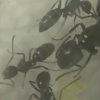I decided instead of using chat, I'll just make a thread about it. Don't expect it to be the most detailed, and no, no pictures. The most action happens at night (until Winter, but I don't know if both Pheidole megacephala and Argentine ants will disappear. Usually Argentine ants disappear for most part). But, since action happens at night I have no way to take pictures or video or anything and I can't light up the area when people are trying to sleep. My cameras I have access to are bad enough as it is. Also this first post will be long, future updates will be short as I will only focus on certain areas of where most action is (whether it be massive battles, or important locations they expanded to)
Also, I actually don't care who wins. Personally, I think Pheidole megacephala are a lot more fun and exciting to watch, plus they make cool nests. Argentine ants are most boring ant in the whole world. Even if they were native, still be the most boring and mundane ant to me lol. Personal reasons aside, I think Argentine ants are a (tiny bit) better for the environment. Though Solenopsis invicta (the invasive form of multiple queens) still being worse by far to me than both of them. Luckily no more S. invicta around here.
Anyway. Some notes.
Pheidole megacephala do expand on their own, but the vast majority of their expansion is raiding Argentine ant colonies or retaliating against the Argentine ant aggression and then moving into their conquered area. They have however expanded in many areas without conquering any ants.
Pheidole megacephala may expand relatively slow (but considering they haven't been in the area for long its pretty good), but the areas they move into are heavily "condensed" populations of Pheidole ants. This is different than when I dig into Argentine ants. The Argentine ants occupy large areas and move into areas fast, but not very condensed colonies.
Brachymyrmex patagonicus are interesting. They pushed back the Pheidole megacephala expanding in one area, and actively "block" Pheidole megacephala inside their colonies. Granted, this does not matter much because Pheidole megacephala are mostly subterranean anyway. However, the Brachymyrmex do not have this much aggression against Argentine ants. Against Argentine ants its 1-2% at most. There seems little effect overall though on populations of Pheidole megacephala, and have had no effect on any wars between the Ph. megacephala and Argentine ants.
Argentine ant strategy of moving into an area and occupying it does not work well at all against Pheidole megacephala. Why you may ask? This method works well on small populations of ants (even single queened Solenopsis invicta colonies). This does not work on CONDENSED but huge populations of ants. And while Argentine ants move in fast, they aren't nearly as good at recruiting as Pheidole megacephala. Not only that...again Pheidole megacephala are subterranean. Occupying above ground when vast majority of ants are underground doesn't work as much. Finally, Pheidole megacephala use Argentine ant's strategy against them. They use groups of Pheidole megacephala to keep Argentine ants busy in one area, then attack weaker areas of Argentine ants. In this, they often end up blocking the path of Argentine ants and surrounding the large group of occupying Argentine ants and kill them off. That, or/and the Pheidole megacephala go straight to the Argentine ant nest itself while they are distracted by occupying. Plus Pheidole megacephala are just better fighters I noticed.
The Argentine ants always do the attacking against the Pheidole megacephala. This seems to kick up Pheidole megacephala raiding instincts and actually makes them expand a lot more...so Pheidole megacephala benefit from being attacked (thus far). Argentine ants attack one or two or sometimes three days, and the 2nd to 4th day the Pheidole megacephala kick up their recruiting and go from a stalemate to beating the Argentine ants. They do however are almost always on the defensive first day and that is the day they are weakest. I haven't seen the Pheidole megacephala be the attackers against the Argentine ants in any major conflict thus far.
Finally. Argentine ants however have one major advantage. They recruit from VERY far away, Pheidole megacephala don't seem to do this (despite Pheidole megacephala better at recruiting). I've seen Argentine ants travel far distances to join the war fronts.
As for areas I talk about...
These are the areas I talk about in the journal:
1. Central dumpster area (plant/garage area surrounded by a road, with concrete drainage paths along connecting two opposite areas. The Pheidole megacephala make heavy use of expanding to disconnected locations by these concrete drainage paths. They past week 100% conquered this area and kicked all the Argentine ants out. A few months ago there was at least over 100,000 Argentine ants in this area. Huge wars were happening here 2 months ago)
1a. Drainage East Poolside
1b. Drainage West Pondside (recently 100% taken over)
2. Southern Grassy Border (this is the big area of a lot happening currently as of this post. Huge expansion of Pheidole megacephala here, meeting heavy attacks by Argentine ants.)
3. Northwest Grassy Border (refer to #2 for the proper description. I made a slight mistake with the area. This is the area a lot has recently happened)
4. Northeast Grassy Border (Same connected area as #3. And, since last night, Argentine ants moved in and started attacking this area. However, not nearly as many Argentine ants as Northwest Grassy Border. This area I'll update in an hour or two, but it looked like the Pheidole megacephala were easily pushing back earlier today.)
5. Western Poolside (this area the Pheidole megacephala moved in from 1a. In this area it doesn't take much expansion to get to one of the pools inside the complex. In this area connects to the river after the pool, and also will be massive wars in the future. From the pool, the Argentine ants can amass millions of ants. A near infinite supply of ants from past the pond along the river area. However, currently, as of 2-3 weeks ago the Pheidole megacephala conquered a tree that was heavily fortified by Argentine ants. The battle lasted two weeks and the Argentine ants lost. I'll update this area in an hour or two as well, since earlier it looked like Argentine ants were trying to move in. But I'm not sure if it was an actual attack or some explorers.
6. Western Garages (this area hasn't seen much expansion or activity by the Pheidole megacephala. However as of adding this area entry, there was quite a large battle of Argentine ants and Ph. megacephala.)
7. -- (none yet)
Here is a picture showing the areas and current battles, in the worst paint map you'll ever see in your life

In any case, on to the journal. I'll sum up some stuff I've added in chat...
So far the Pheidole megacephala have won every single fight against the Argentine ants. The Ph. megacephala are even winning big fights (which I'll update again in 1-2 hours with a couple of these) against the Argentine ants. Less than a week ago the Argentine ants moved into the southern grassy border of the Pheidole megacephala colony boundary by the 10s of thousands. First impressions I thought there was too many Argentine ants. However, last night and the night before clearly was not the case. The war was a stalemate at first (as been every battle so far between the two supercolonies) and then two nights ago the Pheidole megacephala instead pushed back and completely stopped the Argentine ants from getting deep into their territory. Keep in mind, apartment buildings block most of the are,so the ants are funneled into chokepoints. Since then (as of last night) the Pheidole megacephala have greatly expanded toward the Argentine ant area from where they were coming from and pushed them back a lot.
Going back a ways, a completely different part of the supercolony, at Western Poolside as I said in the part of areas I talk about...the Pheidole megacephala won a 2 week long battle against the Argentine ants and took over a tree that had a huge Argentine ant colony in it. It did look like Argentine ants were attacking, just a few. I'll look later and see what it looks like.
Overall, Pheidole megacephala have expanded a huge amount last month and some expansions this month. But, have lost not a single battle at all. Even against 10s of thousands of Argentine ants. Even one area of 100,000+ they easily won. However, these are all small battles compared to battles they'll face in further expansions. Especially if they get close to the pond or the pool areas. I may however not be here to see that, because if I move next year, well won't be watching them after I move. Until then, I can update on the areas they are battling and expanding into.
Edited by Vendayn, December 9 2018 - 9:43 PM.

















